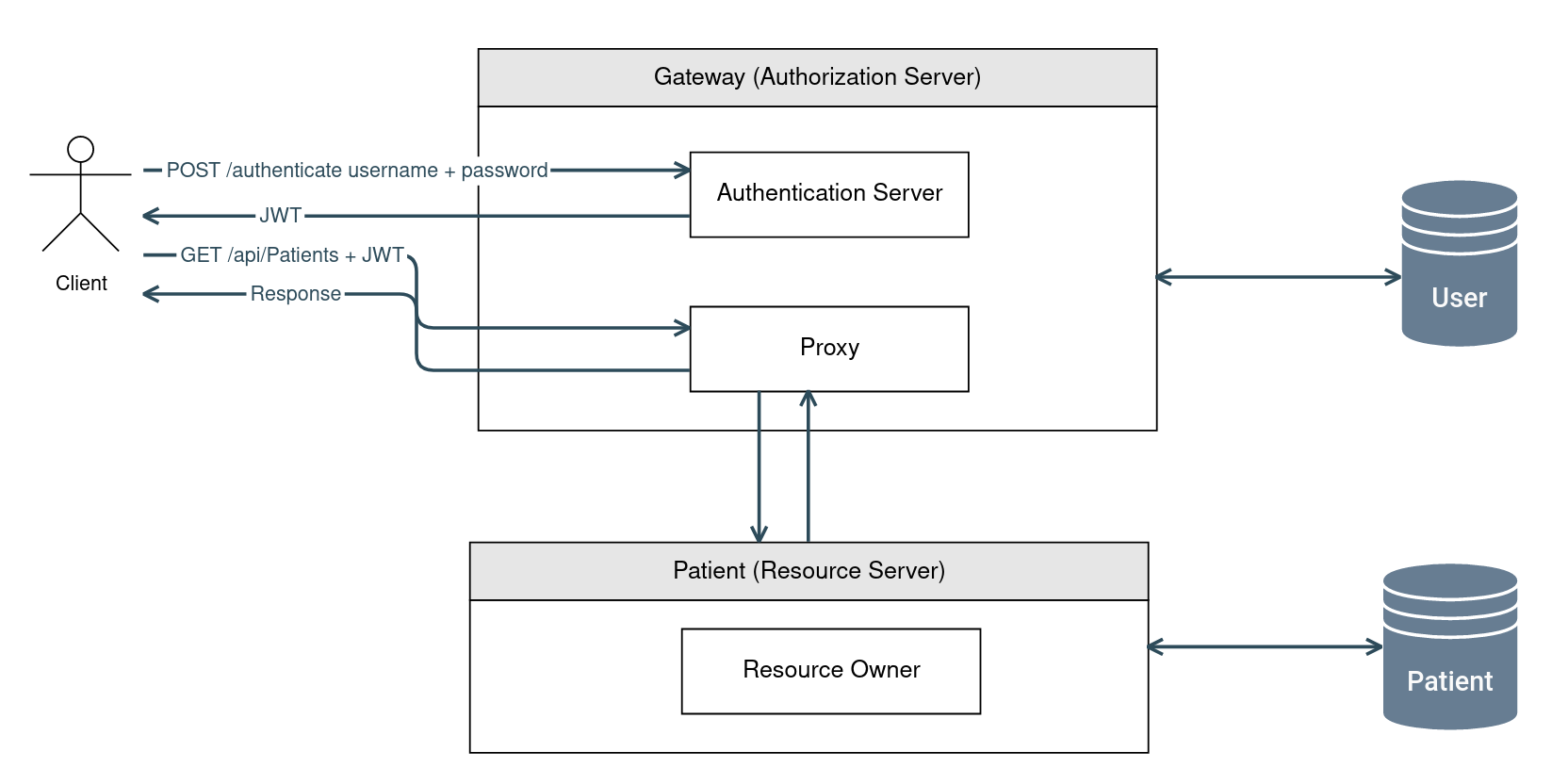
For my MSc Computer science dissertation project, I worked with a German company on an industrial project. The project involved driving healthcare digitalisation
by developing a proof-of-concept microservice-based healthcare management system. The system was based on the gateway API pattern.
It focused on increasing healthcare integration by increasing interoperability and encouraging adoption through being GDPR-compliant and easier
for healthcare providers to implement.
Features
- Gateway: implemented authentication using JWTs and a IAM service
- Gateway: redirected user requests to a secure controller and then to patient service
- Patient: decrypted JWT and applied custom authorisation
- Used Apache Olingo and JPA (ORM) to automatically create API routes and handle database transactions using the data model
- Implemented 70+ automated functional tests, covering the entire process from user to gateway to patient and back
Thoughts
Whereas my previous projects focused on particular parts of a software system, this project proved a challenge in requiring me to consider everything from
authentication/authorisation, to automated testing, and desiging a microservice-based system. I was exposed to Java, Maven, and Spring-Boot (Security, Hibernate, Envers).
Overall, I feel like the project was a success. I developed a core gateway service and patient service that can be extended by integrating additional services with the gateway.
The generic testing methods, JPA, and Olingo make creating a new service easy. Alternatively, the decoupling between microservices mean an API built with entirely different
technologies can be integrated.


